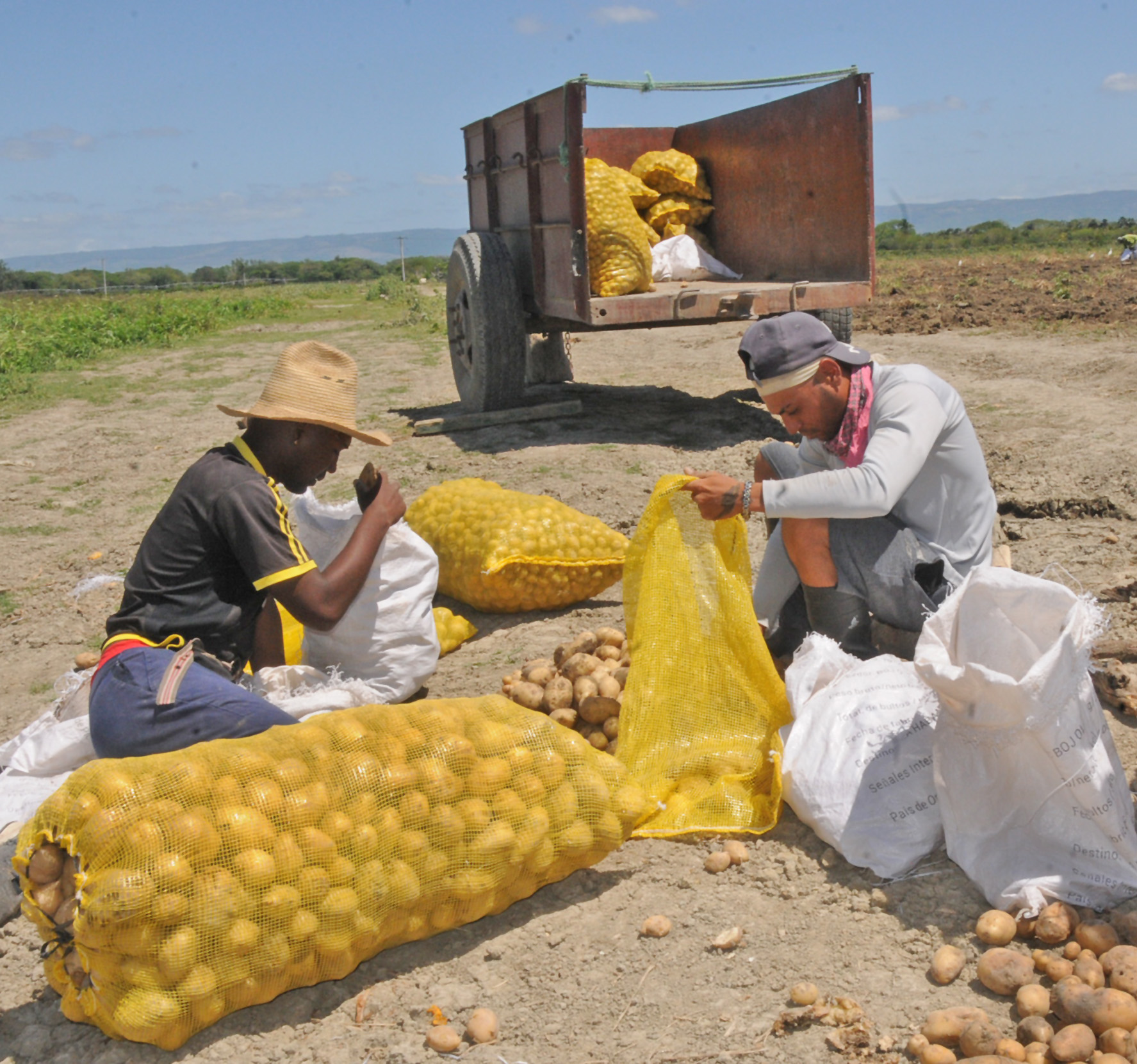 Guantanamo.- The new potato harvest in Guantánamo, this time on flat land in Arroyo Hondo and Chapala, are producing poor harvests, estimated by producers to be between four and five tons per hectare (ha).
Guantanamo.- The new potato harvest in Guantánamo, this time on flat land in Arroyo Hondo and Chapala, are producing poor harvests, estimated by producers to be between four and five tons per hectare (ha).
Experts consulted by this writer assure that these production levels are equivalent to obtaining two potatoes for each one planted, when the required yield for an acceptable harvest is at least ten.
“The producer price is encouraging.” When farmers Raúl Díaz Alonso and Jorge Fernández Omaña took on the task of venturing into this production for the first time, they knew they were facing a significant challenge, due to the special requirements of organic cultivation, the expensive resources such as fertilizers, pesticides, and fungicides, and the irrigation infrastructure that also faces problems for the erratic and unreliable power supplies.
The greatest challenge, however, was the late planting of the tuber. The 55 hectares (40 by Raúl and 15 by Jorge) were planted in January, too late for a crop that thrives in cool weather and does poorly, or very poorly, when temperatures rise.
“The seed arrived late, and because of the rush to plant it because time was running out, neither the disinfection nor the required resting period before being transferred to the soil was adequate,” Díaz Alonso noted.
He said that this very haste, once the decision to plant potatoes in the province was made, led to hasty land preparation. “I estimate that to plant this crop, the soil must be prepared at least two months before planting to eliminate disease-causing microorganisms.”
The solution isn’t to give up on planting potatoes in Guantánamo; it’s to plant them on time and tend to them with care. – Jorge Fernández. “Due to Guantánamo’s climatic conditions, with a predominance of high temperatures, the optimal date for planting potatoes should be in November. Planting them in January, combined with irrigation problems, led to the total loss of some areas and damage to others,” said Jorge Fernández, who had to demolish five diseased hectares, compared to eight hectares for Raúl.

The Fernández Omaña areas were also sown manually.
According to Fernández Omaña, January plantings, especially varieties that are more than three months old, like some of the ones they received, face the effects of the traditional late-April rains at harvest time, with the resulting impact, as many potatoes rot because they cannot be harvested in time due to the wet soil, as has happened on both farms.
Raúl explains that tuber rot problems arose early after planting, which could not be resolved with phytosanitary treatment. He estimates that this cause alone accounts for harvest losses of between 30 and 35 percent.
He argues that that occurred mostly in the area planted with seeds that, due to their size, they should be chopped in order to cover the entire area they had planned to plant.
Inadequate Mechanization
Yields have been very low, estimated at 5 tons per hectare in Arroyo Hondo and 4 tons in Chapala. Another difficulty faced, and one that should not be underestimated due to its impact on yields, is related to the lack of mechanization, or at best, the use of inadequate mechanization.
Planting,” Raúl explains, “we began using a machine borrowed from another province, which required workers attached to seats to throw the seed into the furrow, with obvious irregularities in the planting pattern. This led us to end the manual sowing process: with a man walking the furrow with a seed-filled bag. This way, we were able to plant the remaining seed at the same distance from each other, making better use of the soil.
Another setback they face (the harvest continues) is with the fruit harvester. In the absence of specialized equipment, the two producers had to adapt a type of plow to use as a harvester. Due to its imperfections, this plow leaves a lot of potatoes underground, and some of them are always lost, even after a new harvesting pass, which also affects yield.

The moral of the story: if we want to expand potato cultivation in Guantánamo, we must seriously consider mechanizing our activities. In Cuba, some companies even use drones to monitor potato development, detect fields affected by pests or diseases, perform fumigation, and perform other tasks.
So, are you giving up on planting potatoes again? we asked both producers. No way.
The producers market their potatoes crop to the agricultural company in their municipality. As of Tuesday the 22nd, when Venceremos visited both farmers, Raúl had harvested about 12 hectares and Jorge seven, leaving 20 hectares for the former and four hectares for the latter.
In the February 7th edition of this weekly, in an article about the new attempt to promote potato planting in the province, we posed the question: Potato planting in Guantánamo: Will the third time be the charm?
And that wasn’t the end of it either, as the results of the new experiment fell far short of expectations. Perhaps the most important fruit it yielded, as the producers argue, is the demonstration that to produce potatoes in the province, under the current conditions of climate change, planting must be early and adequate mechanization and the rest of the resources required for the crop must be available. Then, these would be objective plantings.
